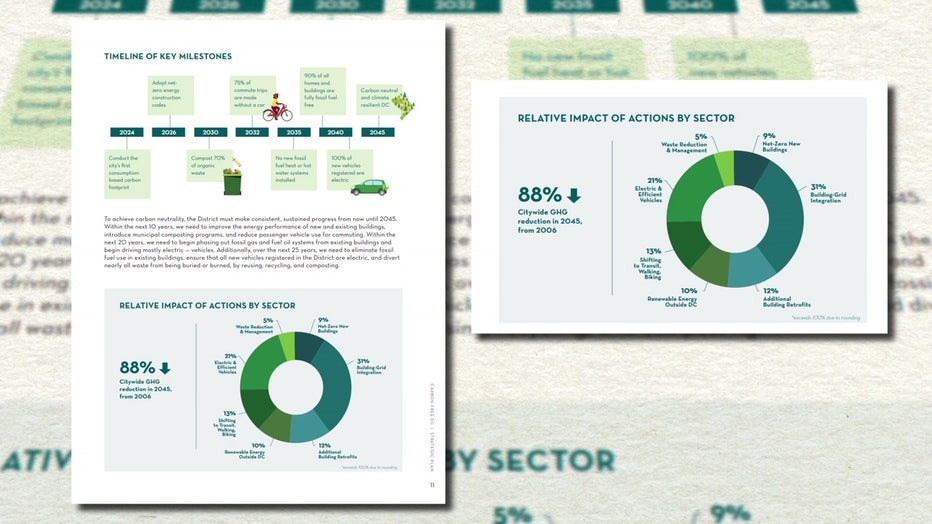District unveils Carbon Free DC strategy to achieve carbon neutrality by 2045
WASHINGTON - Carbon free by 2045 is the direction D.C. leaders are working towards as they look for ways to address climate change in the nation's capital.
In a 28-page summary, the plan focuses on buildings, transportation, land use and waste.
Currently, buildings make up about 71 percent of the city's emissions.
From 2006 to 2021, the city cut down emissions by 36 percent. That number could increase to 88 percent by 2045.

District unveils Carbon Free DC strategy to achieve carbon neutrality by 2045
Mayor Muriel Bowser's Carbon Free DC Key Strategies:
Phasing out on-site fossil fuel combustion in buildings. Buildings are the largest source of GHG emissions in the District (71% of total emissions). Strategies to address these emissions include calling for net-zero energy construction codes and offering programs that help residents and buildings convert existing systems to zero-carbon alternatives in a way that improves the quality of homes while simultaneously maintaining affordability.
Bringing housing, jobs, and daily needs closer together. The District's vision is for more housing that is both affordable and located in connected neighborhoods, helping residents live closer to where they need to go, saving time and money. Strategies include supporting housing development where little has occurred, enhancing transit-oriented development in neighborhoods that are already well-connected, providing opportunities for residents of all incomes and household sizes to rent and own, and increasing the coverage, speed, and reliability of the transit network.
Enabling more residents to walk, bike, and take public transit to reach their destination. Strategies include reducing costs for transit with free or reduced fares, expanding late night services, and providing options that meet the specific needs of historically under-resourced communities.
Assessing and reducing embodied carbon of materials and energy used. The goods and services we depend on daily—the food we eat, materials we use to build our homes, and energy that powers our daily lives all have an environmental impact. Strategies include conducting a baseline assessment of the District's consumption-based emissions, adopting interim reduction targets, and charting a pathway to achieving those goals; accelerating a comprehensive strategy to address food waste; and encouraging recycling and reuse.
Learn more about the Carbon Free DC strategy online.

